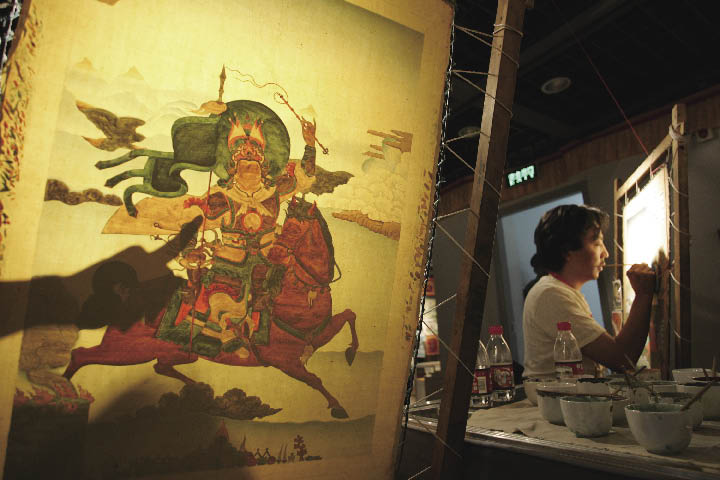|
Like the Homeric epics, this great work King Gesar existed in oral form before it was ever written down. In a sense, the popularity and immortality of the epic should be credited to the the inheritors of the oral tradition. It took folk artists generations of painstaking effort and loving devotion to create the legend. With instilled wisdom and an abundant knowledge of their history and culture, each has made meritorious contributions to developing this Tibetan cultural heritage.
 |
|
This thangka painting of King Gesar was one of 260 paintings exhibited in Beijing's Olympic Cultural Festival. |
Balladeers were always highly revered in Tibet, and today they are regarded as national treasures. During the large-scale cultural preservation project launched by the central government, more than 100 bards were discovered to be active in rural and pastoral areas. The oldest of these performers is 86 years old, while the youngest are in their 20s and 30s. To arouse more interest in learning the epic, the government has set up a training base for King Gesar artists and plans to integrate this masterpiece into local primary school curriculum.
As the longest epic in the world, King Gesar is unique as a wellspring of indigenous cultural diversity and evidence of sustainable, dynamic human creativity.
Today, some of the inscribed woodblocks of the epic can still be found in Lhasa and Xigaze. The oldest extant text of the epic is a Mongolian woodblock print commissioned by Emperor Kangxi of the Qing Dynasty in 1716. A statue of Gesar in the Potala Palace draws countless pilgrims on a daily basis. The hero of Tibet continues to inspire thangka paintings and feature in Tibetan Opera and other art forms. King Gesar attracts both young and old "subjects of the heart," providing the Tibetan people with a cultural icon and historical continuity in the narrative.
|
